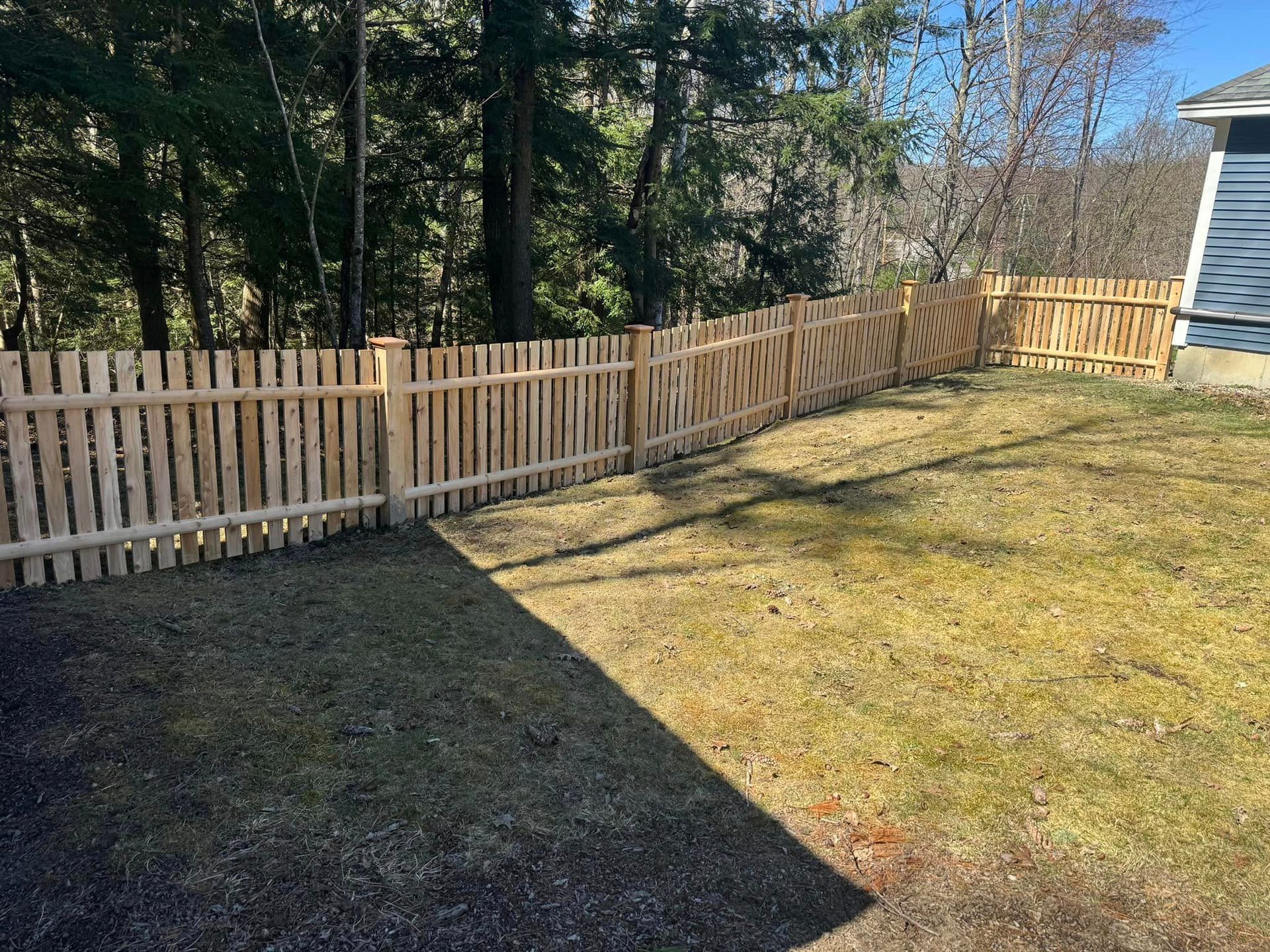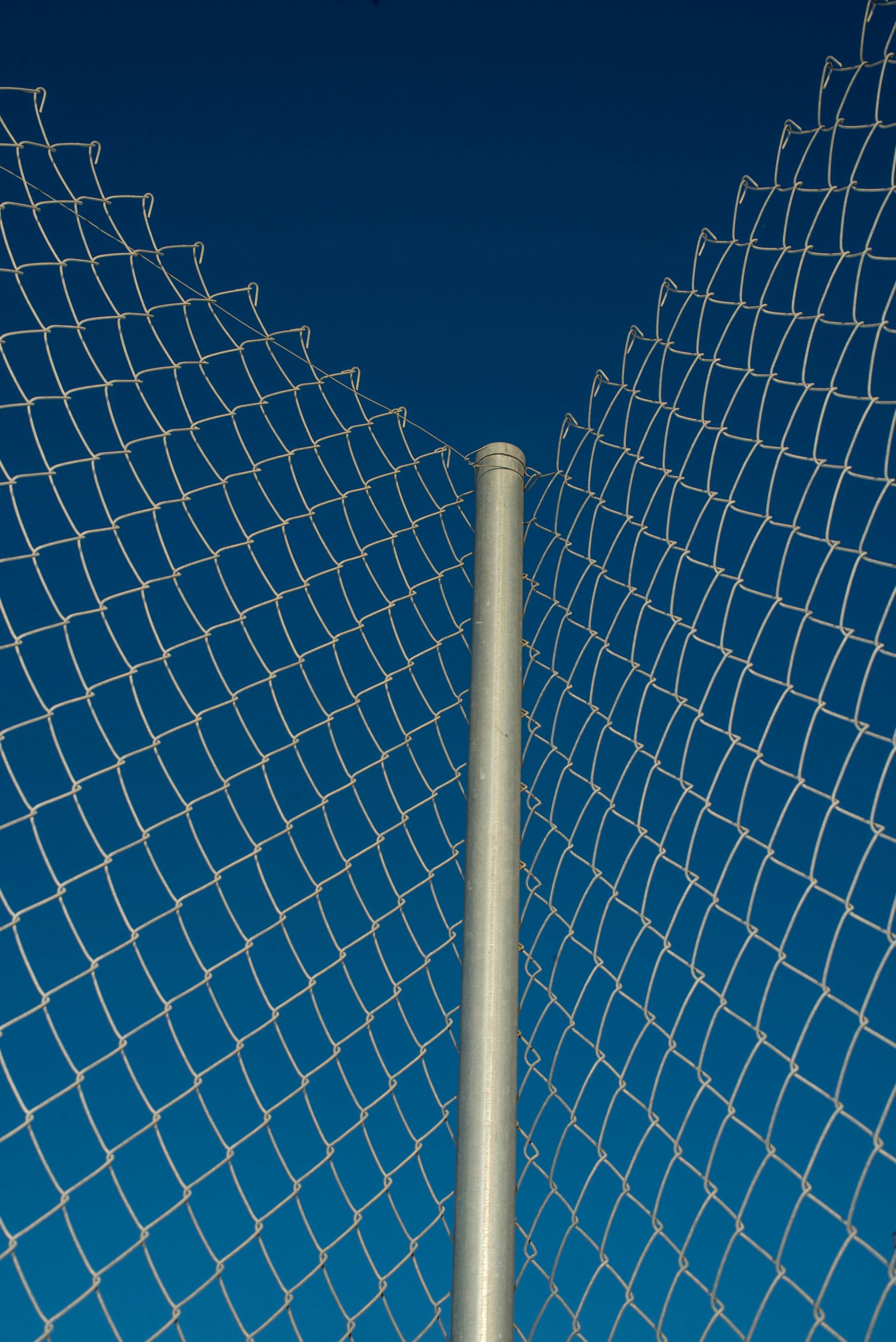Call Us: (207)-415-0219
Is a Wood Fence Durable for Maine Winters? Find Out Here

Is a Wood Fence Suitable for Maine’s Harsh Winters?
Wood fences are a classic choice for many homeowners, thanks to their natural beauty and ability to fit almost any yard. But Maine’s long, freezing winters raise a key question: can a wood fence handle the snow, ice, and freezing temperatures?
In this guide, we’ll break down how Maine’s harsh winters affect wood fences, what you can do to protect them, and whether this option makes sense for your home.
Understanding Maine's Winter Climate
Maine winters are no joke. Temperatures regularly drop well below freezing, with averages ranging from 15°F to 25°F in many areas. Heavy snowfall is the norm, and storms can bring feet of snow in a single event. On top of that, the constant cycle of freezing and thawing can wreak havoc on outdoor structures.
This harsh climate makes it essential to choose materials for outdoor projects, like fencing, that can withstand these extreme conditions. To figure out if a wood fence is a good fit, it helps to understand how Maine’s winters can impact it.
Impact of Harsh Winters on Wood Fences
Maine’s winters can be tough on outdoor structures, and wood fences are no exception. From heavy snowfall to freezing temperatures, these conditions can lead to several issues that compromise the durability and appearance of your fence. Understanding these potential problems can help you prepare and protect your investment.
Moisture and Rot
Maine’s winters come with plenty of moisture from snow and ice. When wood absorbs this moisture, it becomes more prone to rot, especially if it’s not properly treated. Prolonged exposure to wet conditions weakens the wood and shortens its lifespan.
Freezing and Thawing Cycles
The freeze-thaw cycle is a big challenge for wood fences. As temperatures drop, the water inside the wood freezes and expands. When it warms up, the water thaws and contracts. This repeated movement can cause cracks, warping, and structural damage over time.
Snow Load and Physical Damage
Heavy snowfalls can pile up against a fence, putting significant pressure on the structure. In addition, falling branches from nearby trees during storms can hit wood fences, leading to broken boards or leaning sections.
Selecting the Right Wood for Cold Climates
Choosing the right type of wood can make or break your fence’s ability to survive Maine’s harsh winters. Some woods naturally handle moisture and freezing temperatures better, while specific treatments can add extra durability. Here are five top options for cold climates.
Naturally Rot-Resistant Woods
Woods like cedar and redwood are excellent choices for winter resilience. These species contain natural oils that resist moisture and decay. Cedar is especially popular because it’s lightweight, durable, and less likely to crack or warp in freezing conditions.
Pressure-Treated Wood
Pressure-treated wood is treated with preservatives to fight moisture, rot, and insect damage. It’s a cost-effective option that performs well in wet and snowy environments, particularly when sealed or stained for added protection.
Douglas Fir
Douglas fir is a strong and sturdy wood that can withstand harsh winters. While it isn’t naturally rot-resistant like cedar, it performs well when properly treated and maintained, making it a good option for fences in colder climates.
White Oak
White oak is dense and highly resistant to water penetration, which helps it handle Maine’s freezing temperatures and snow. It’s less likely to absorb moisture, reducing the risk of warping and rot over time.
Composite Wood
Composite wood is made from a mix of wood fibers and plastic, giving it superior resistance to moisture and rot. While not entirely “natural,” it’s an excellent low-maintenance option that stands up well to freezing and thawing cycles.
Protective Measures for Wood Fences in Winter
Protecting your wood fence during Maine’s harsh winters doesn’t have to be complicated. With the right care and preparation, you can significantly extend its lifespan and keep it looking great. Here are some practical steps to shield your fence from the elements.
Sealing and Staining
Applying a high-quality waterproof sealant or stain is one of the most effective ways to protect a wood fence. These treatments create a barrier that repels moisture, preventing water from seeping into the wood. Ideally, this should be done before the first snowfall and reapplied every couple of years for maximum protection.
Regular Maintenance
Inspect your fence regularly, especially before and after winter. Look for signs of damage like cracks, loose boards, or areas of rot. Promptly addressing these issues can prevent further deterioration. Simple tasks, like tightening screws or replacing damaged boards, go a long way.
Snow and Ice Management
Avoid letting snow pile up against your fence. Use a shovel or snow blower to clear snow that accumulates along the base. Be cautious when removing ice; heavy tools can accidentally damage the wood. Instead, use a de-icer that’s safe for wood surfaces.
Trim Nearby Branches
Winter storms can bring down branches, which might damage your fence. Trim any trees or shrubs near your fence before winter to minimize this risk. Keeping branches away also reduces the amount of snow and ice that might fall directly on the fence.
Use Fence Caps or Covers
Adding caps or covers to the tops of fence posts prevents water from pooling and seeping into the wood. These simple additions can make a big difference in preventing moisture-related damage over time.
Alternatives to Wood Fencing in Cold Climates
If you’re unsure whether a wood fence can handle Maine’s harsh winters, it’s worth considering alternatives. Some materials are better suited for extreme conditions and require less maintenance while still offering a stylish look.
Vinyl Fencing
Vinyl fencing is a popular choice for cold climates. It doesn’t absorb moisture, so it won’t rot, warp, or crack during freezing and thawing cycles. Vinyl fences also require minimal maintenance, making them a hassle-free option for homeowners dealing with tough winters.
Metal Fencing
Metal fences, such as aluminum or steel, are incredibly durable and resistant to damage from snow and ice. Aluminum is lightweight and rust-resistant, while steel offers extra strength for areas with heavy snowfall. Both options stand up well to Maine’s freezing temperatures and require little upkeep.
Composite Fencing
Composite fencing combines wood fibers and plastic to create a material that mimics the look of wood but offers superior resistance to moisture and decay. It’s an excellent low-maintenance alternative that can withstand Maine’s challenging winters without the same vulnerabilities as traditional wood.
Stone or Masonry Fencing
For a more permanent and weather-resistant option, stone or masonry fences are nearly impervious to winter damage. While they are pricier upfront, they offer unparalleled durability and can handle Maine’s winters with ease.
Conclusion
A wood fence can thrive in Maine’s challenging winters if you choose the right materials and take proper precautions. Options like cedar, redwood, and pressure-treated wood, combined with regular maintenance, can withstand harsh conditions. However, if you want a low-maintenance and durable alternative, materials like vinyl, metal, or composite may be better suited for your needs.
For expert advice and professional installation or repair, trust Seacoast Fence and Construction. Based in Biddeford, ME, they specialize in providing top-quality fencing solutions for both residential and commercial properties. With experience in wood, vinyl, chain link, and aluminum fences, their skilled team ensures your fence is built to last, even through Maine’s toughest winters.
Contact Seacoast Fence and Construction today for a consultation and let their expertise enhance your property’s durability, safety, and curb appeal. Whether you need a new installation or repairs to an existing fence, they’re the trusted name in Biddeford for reliable and professional service.
FAQs
How often should I seal or stain my wood fence to protect it from winter damage?
It’s recommended to seal or stain your wood fence every 2-3 years. For areas with extreme winters, annual inspections and touch-ups can provide added protection.
What’s the best time of year to install a wood fence in Maine?
Spring and summer are ideal for fence installation in Maine, as the ground is not frozen and weather conditions are more predictable. However, fall installations can also be effective if planned properly.
Can I use salt or de-icers near my wood fence without causing damage?
Salt and chemical de-icers can harm wood by drying it out or causing stains. Opt for pet- and wood-safe de-icers, or manually remove ice with tools that won’t scratch or damage the surface.
How do I know if my wood fence has winter damage?
Look for signs like cracks, warping, loose boards, or areas of discoloration that indicate moisture infiltration. Addressing these issues promptly can prevent further damage.
Are wood fences more expensive to maintain in cold climates compared to other materials?
Yes, wood fences often require more upkeep, such as sealing, staining, and regular inspections, compared to materials like vinyl or composite. However, with proper care, they can last for many years.
What’s the typical lifespan of a wood fence in Maine?
A well-maintained wood fence can last 10-15 years in Maine’s climate. Choosing rot-resistant wood and taking preventive measures can extend its lifespan even further.
Our Services
Contact Information
Phone:
Address:
642 Elm St Unit 3, Biddeford ME 4005
Business Hours
- Mon - Fri
- -
- Sat - Sun
- Closed
Tips & Articles


